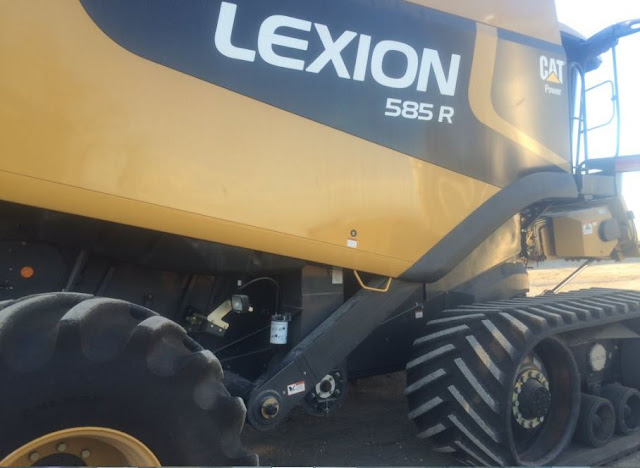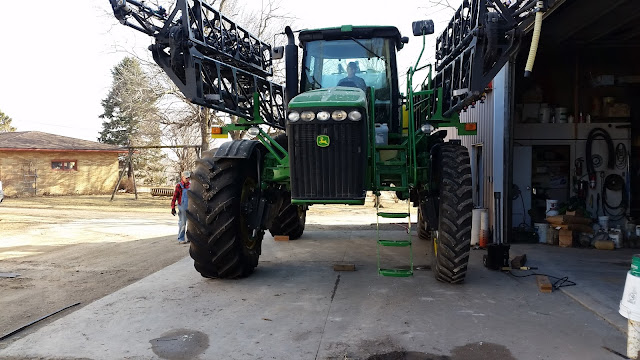Disclaimer: These are my views and my understanding of (regenerative) agriculture. By no means am I an expert, just a student at YouTube University. I am not condemning conventional practices or judging other farmers for their practices. My goal is to bring forth information that will help others develop a better understanding of the ecosystem they are working with. Many of these points & ideas are going to be in conflict with the practices we are currently employing on our farms (myself included). Have an open mind and be willing to learn instead of taking everything personally. Do your own research before implementing any practices on your own operation. Adaption, not adoption.
_________________________________________________________________
Alright folks, this is where it starts to get good...time to get down to business.
There are multiple definitions that popped up when I did a Google search for "Regenerative Agriculture," but I am not sure that I am in 100% agreement with any of them (imagine that...). If I had to pick one, I would go with Wikipedia's definition:
"Regenerative agriculture is a sub-sector practice of organic farming designed to build soil health or to regenerate unhealthy soils."
_________________________________________________________________
Alright folks, this is where it starts to get good...time to get down to business.
"Regenerative agriculture is a sub-sector practice of organic farming designed to build soil health or to regenerate unhealthy soils."
Now, if I were to come up with my own definition of regenerative agriculture, it would go something like this:
"Regenerative agriculture is a farming practice where the primary focus is on building and maintaining a healthy, functioning ecosystem by utilizing the natural, native biological and chemical processes that were in place before human interference while minimizing the use of synthetic fertilizer & pesticide."
Wow, what a mouthful...good luck remembering that. Well, if you are only going to remember one part of this definition, make it the "...utilizing the natural, native biological and chemical processes..." part.
There are more microorganisms in a teaspoon of healthy soil than there are people on this earth. Think of these microorganisms as your soil livestock; they are key in cycling nutrients through the system by breaking down/eating plant residue and making those nutrients available to whatever plant(s) is now growing in the soil. Mimicking and utilizing the natural systems available to us will stimulate these soil livestock by providing them the habitat and resources they need in order to thrive. This is key to the success of the system. These systems change from one area to another, therefore it is not possible to develop a one size fits all management plan that will be ideal in every region, but the principles remain the same.
For me, on the prairies of southeast Iowa, I need to mimic a tallgrass prairie system. The tallgrass prairie system is built around a dominant warm season grass like Big Bluestem, for example. Fortunately we have a really awesome dominant warm season grass that we can build a big part of our system around. You might have heard of it before...Corn. It also happens to be the most profitable crop in our rotation.
BUT, there is more to the tallgrass prairie system than just a dominant warm season grass...that is the easy part. There are numerous other plant species living under the canopy in the understory. Numerous warm and cool season species that help maximize sunlight harvest efficiency, fill the gaps in the growing season when the dominant warm season grass is in dormancy, and to help feed the soil livestock a well balanced diet. Finding the right plant species to grow alongside our corn is what we need to be focusing on...adding diversity to the system and getting away from our bad habit of growing crops as monocultures.
"Regenerative agriculture is a farming practice where the primary focus is on building and maintaining a healthy, functioning ecosystem by utilizing the natural, native biological and chemical processes that were in place before human interference while minimizing the use of synthetic fertilizer & pesticide."
Wow, what a mouthful...good luck remembering that. Well, if you are only going to remember one part of this definition, make it the "...utilizing the natural, native biological and chemical processes..." part.
There are more microorganisms in a teaspoon of healthy soil than there are people on this earth. Think of these microorganisms as your soil livestock; they are key in cycling nutrients through the system by breaking down/eating plant residue and making those nutrients available to whatever plant(s) is now growing in the soil. Mimicking and utilizing the natural systems available to us will stimulate these soil livestock by providing them the habitat and resources they need in order to thrive. This is key to the success of the system. These systems change from one area to another, therefore it is not possible to develop a one size fits all management plan that will be ideal in every region, but the principles remain the same.
For me, on the prairies of southeast Iowa, I need to mimic a tallgrass prairie system. The tallgrass prairie system is built around a dominant warm season grass like Big Bluestem, for example. Fortunately we have a really awesome dominant warm season grass that we can build a big part of our system around. You might have heard of it before...Corn. It also happens to be the most profitable crop in our rotation.
BUT, there is more to the tallgrass prairie system than just a dominant warm season grass...that is the easy part. There are numerous other plant species living under the canopy in the understory. Numerous warm and cool season species that help maximize sunlight harvest efficiency, fill the gaps in the growing season when the dominant warm season grass is in dormancy, and to help feed the soil livestock a well balanced diet. Finding the right plant species to grow alongside our corn is what we need to be focusing on...adding diversity to the system and getting away from our bad habit of growing crops as monocultures.
Key Aspects of Regenerative Agriculture:
- No or Minimal Soil Disturbance: Disturb the soil as little as possible, whether it be from tillage or performing a field operation in wet conditions, we need to avoid disrupting and destroying the soil structure. And yes, that includes the top 2 inches of soil (vertical tillage, etc). Every time we till the soil, we are destroying the habitat of our soil livestock and forcing them to rebuild from scratch. Imagine how little you would get accomplished on your farm if you had to rebuild everything multiple times each year...that is what tillage systems are doing to our soil livestock.
- Armor on the Soil. Keep the soil covered/armored with either living plants or plant residue at all times. Bare soil is exposed to the eroding forces of wind and water, whether it be from rain drops, flowing water, or howling wind...if you can see your soil, you're losing it. Bare soil is also exposed to direct sunlight causing it to heat up to temperatures that put your soil livestock in survival mode or even kills them.
- Living Root At All Times: Plants are miniature food (carbon) factories for our soil ecosystem. Whether it be predator insects, earthworms, microbiology, or the soil water cycle...they all need plants, ideally a diverse mix of plants, growing in the soil and feeding them carbon in order to function properly.
- Diversity in the System: Incorporating the first 3 aspects into your system will result in a ecosystem that functions relatively well. Adding diversity to that system is going to be what kicks it into overdrive. Diverse cash crop rotations reduce pest populations as they are not allowed to thrive for long periods of time. Diverse cover crop mixes feed & provide habitat for all aspects of life in & on our soil. Diverse cover crop mixes also decrease the chance of total failure in severe weather events such as drought, etc...the more species you include in a mix, the greater the chances that SOMETHING will survive. When it comes to diversity in our ecosystems: some is better than none, and more is better than less.
Putting all of these aspects into practice will result in a healthy, functioning soil ecosystem that can then be weaned off of synthetic inputs over time.
So today covered "What is Regenerative Agriculture?" Next up: "Why Regenerative Agriculture?"
Thanks for reading. Be sure to leave your questions and comments in the comment section. I'd love to hear your thoughts!
-Michael
So today covered "What is Regenerative Agriculture?" Next up: "Why Regenerative Agriculture?"
Thanks for reading. Be sure to leave your questions and comments in the comment section. I'd love to hear your thoughts!
-Michael





































































